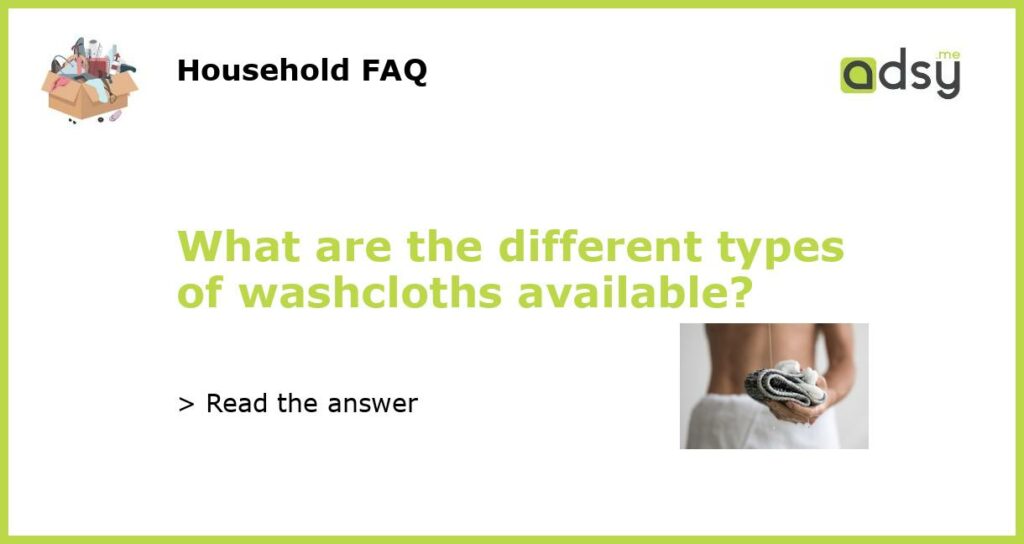What are the different types of washcloths available?
Washcloths are an essential item in any bathroom, used for various purposes such as washing your face, body, or even for personal hygiene. There are several types of washcloths available in the market, each with its own unique features and benefits. In this article, we will explore the different types of washcloths and help you choose the right one for your needs.
Cotton Washcloths
Cotton washcloths are the most common and popular type of washcloth available. They are soft, absorbent, and gentle on the skin, making them suitable for all skin types. Cotton washcloths are perfect for daily use and can be easily washed and reused multiple times. They come in various sizes, thicknesses, and designs, allowing you to find one that suits your preferences.
Cotton washcloths are also environmentally friendly as they are made from natural fibers. They are durable and can withstand frequent use and washing without losing their quality. Additionally, cotton washcloths are hypoallergenic, making them suitable for people with sensitive skin.
Microfiber Washcloths
Microfiber washcloths are made from synthetic fibers that are ultra-soft and highly absorbent. They are known for their ability to remove dirt, oil, and makeup effectively without the need for harsh chemicals or excessive rubbing. Microfiber washcloths are ideal for people with oily or acne-prone skin as they help in deep cleansing and exfoliation.
These washcloths have a plush texture that feels luxurious on the skin. They are also quick-drying, which helps prevent the growth of bacteria and mold. Microfiber washcloths are available in various sizes and colors, making it easy to find one that matches your bathroom decor.
Bamboo Washcloths
Bamboo washcloths are an eco-friendly alternative to traditional washcloths. They are made from bamboo fibers, which are naturally antimicrobial, hypoallergenic, and soft. Bamboo washcloths have a smooth texture that feels gentle on the skin and are also highly absorbent.
Bamboo washcloths are suitable for all skin types, including sensitive skin. They are known for their durability and ability to retain their softness even after repeated washes. These washcloths are also resistant to odors and bacteria, making them a hygienic choice for daily use.
Disposable Washcloths
Disposable washcloths are convenient and hygienic options for travel or situations where regular washcloths are not available. They are typically made from non-woven fabrics and are designed for single-use only.
Disposable washcloths are often used in healthcare settings, as they minimize the risk of cross-contamination. They are also useful for individuals who are bedridden or have limited mobility. Disposable washcloths come in compact packages that are easy to carry and dispose of after use. However, it is important to note that they are not as durable or environmentally friendly as reusable washcloths.
Natural Sponge Washcloths
Natural sponge washcloths are made from sea sponges, which are harvested from the ocean. They are known for their softness and ability to create a luxurious lather. Natural sponge washcloths are ideal for gentle exfoliation and are suitable for all skin types.
These washcloths are biodegradable and eco-friendly. They have natural antibacterial properties that help prevent the growth of bacteria and mold. Natural sponge washcloths need to be properly cleaned and dried after each use to maintain their quality.
In conclusion, there are several types of washcloths available to suit different preferences and needs. Cotton washcloths are the most popular choice due to their softness and durability. Microfiber washcloths are ideal for deep cleansing and exfoliation. Bamboo washcloths are eco-friendly and hypoallergenic. Disposable washcloths are convenient for travel or single-use situations. Natural sponge washcloths offer a luxurious and gentle cleansing experience.






